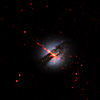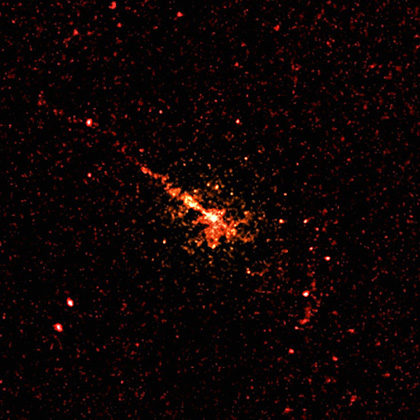Extended X-Ray Jet in Nearby Galaxy Reveals Energy Source
At a distance of 11 million light years, Centaurus A or NGC 5128, is the nearest example of a type of galaxy called an active galaxy. It is a large elliptically shaped galaxy that shows evidence of repeated explosions, probably from a supermassive black hole in the center of the galaxy. Radio and X-ray images of the galaxy show a jet of high-energy particles blasting out from the center. Because of its unusual nature and proximity, it is one of the most extensively studied galaxies in the southern hemisphere.
| Multi-wavelength Images: (*Images not to scale) | |||
|---|---|---|---|
X-ray
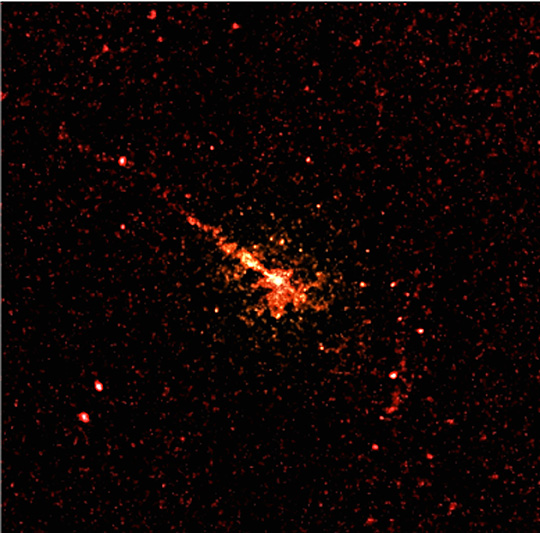 NASA/CXC/SAO NASA/CXC/SAO Jpg (138 k) Tiff (3.6 M) PS (3.4 M) |
Optical
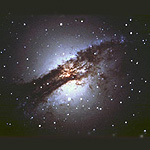 AURA/NOAO/NSF AURA/NOAO/NSF Jpg (74 k) Tiff (3.8 MB) PS (3.4 MB) |
Infrared
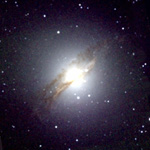 2MASS 2MASS Jpg (28 k) |
Radio NRAO/AUI NRAO/AUI Jpg (75 k) |
|
||||||||||||||||||||||||||||
The X-ray image of the Centaurus A shows a bright, small circular object, which resembles an orange firecracker with a jet of light shooting off to the upper right. This central structure is surrounded by a halo of smaller orange dots on a black background, reminiscent of orange fireflies twinkling in the night sky. The Chandra X-ray Observatory image of Centaurus A shows a bright source in the nucleus of the galaxy, which is a supermassive black hole. The bright jet extending out from the nucleus to the upper left is due to explosive or highly energetic activity around the black hole which ejects matter at high speeds from the vicinity of the black hole. There is also a faint "counter jet" extending to the lower right. This jet is probably pointing away from us. Numerous point-like sources of X rays are also apparent. These are probably due to neutron stars or black holes that are accreting matter from nearby companion stars.



